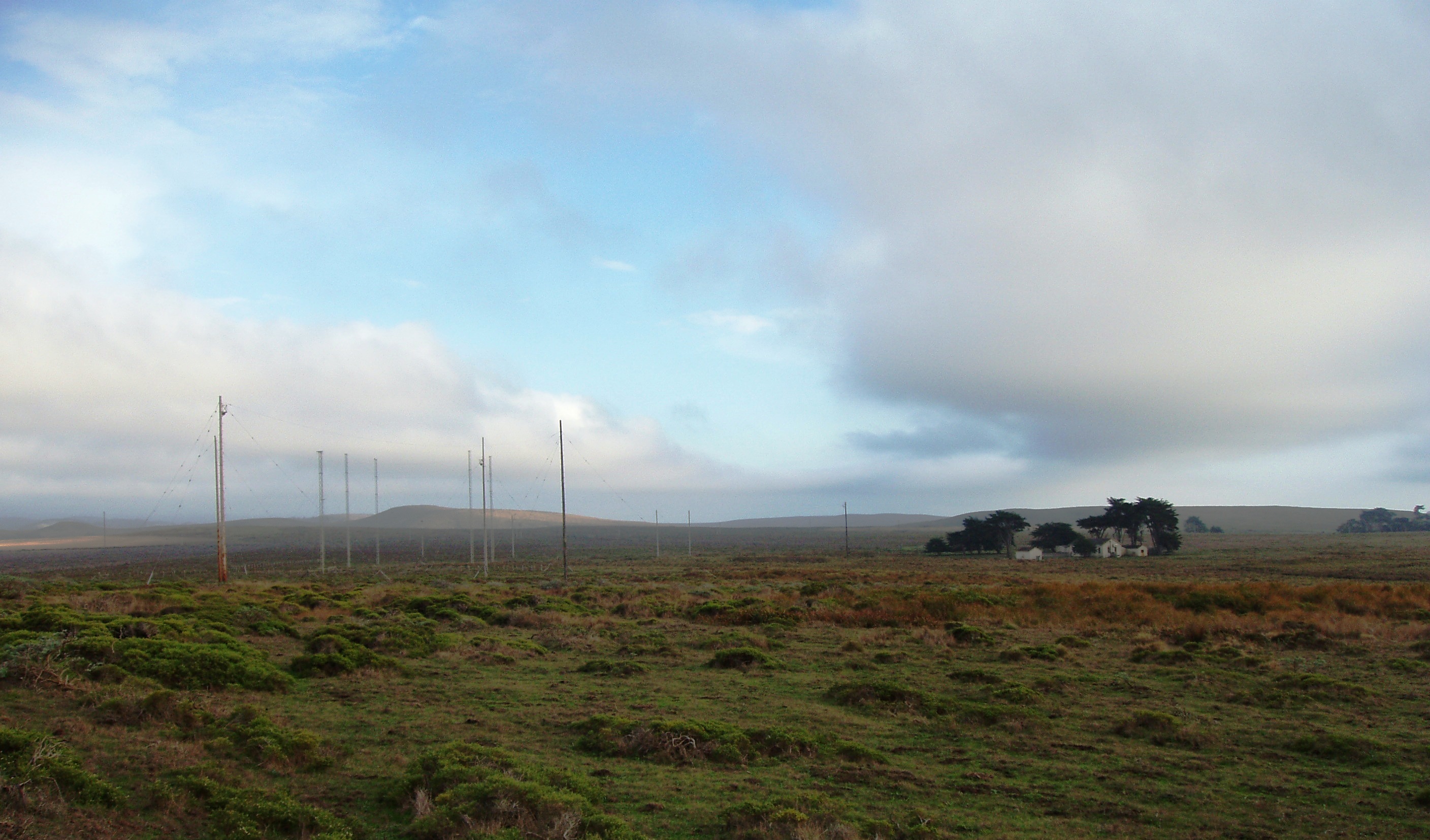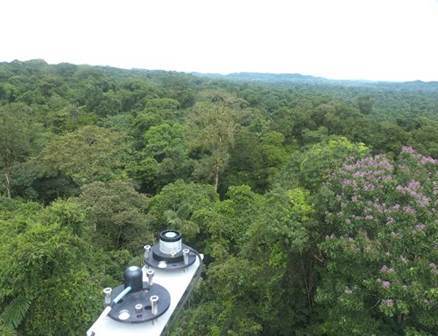New Lab-funded research findings, models, and feedbacks will inform the global models of the future

Over the next three years, atmospheric scientist Jerome Fast of Pacific Northwest National Laboratory (PNNL) will oversee a project designed to understand and model key interactions among clouds, aerosols, and the surface of the land. In the end, he said, process-level findings in the three-year study will lead to more accurate representations of these interactions in earth system models and will help answer what are “among the most important challenges in atmospheric science.”
He is principal investigator for the Integrated Cloud, Land-Surface, and Aerosol System Study (ICLASS). This ambitious science focus area, or SFA project (what national laboratory funding is called), has just been renewed under that new name for fiscal years 2018 to 2020 by the Atmospheric System Research program of the U.S. Department of Energy (DOE).
Fast has assembled a core team of 25 fellow scientists at PNNL. This team and their collaborators nationwide will analyze data, perform laboratory experiments, and conduct high-resolution modeling studies to sharpen the predictive capability of future earth system models.
Three of Fast’s colleagues at PNNL will each oversee a main science question.
In the Clouds
Samson Hagos is research lead on the ICLASS question of convective clouds. How do they grow from small shallow clouds to large mesoscale convective systems? How do such clouds interact with each other and with the environment? These processes, from the initiation of clouds to their organization into complex populations, said Fast, “are poorly represented in models now.”
Hagos said the ICLASS study of cloud processes will get a boost from advances in radar by the DOE’s Atmospheric Radiation Measurement (ARM) Climate Research Facility. In particular, scanning radars are more mobile than ever, and have gathered data in more remote places than ever. “These are new capabilities we intend to exploit,” he said.
There are also significant recent streams of data from field campaigns, said Hagos, including the ARM Investigation Experiment in the Maldives (2011 to 2012), Green Ocean Amazon, or GoAmazon (2014 to 2015), and HI-SCALE (2016, in central Oklahoma, led by Fast). Computational capabilities have also been “steadily increasing” in the eight years he has been associated with the SFA, he added.
ICLASS clouds investigations will also be improved by new instruments, including three cloud radars at ARM’s Southern Great Plains (SGP) atmospheric observatory that measure the vertical movement of air.
“The problem is figuring out how these large clouds form,” said Hagos. “They start with shallow isolated cells, then get deeper and deeper,” a process of cloud population dynamics that are still not well understood. “These are processes we want to improve in our models, to parameterize them to simulate cloud behavior. The main area of uncertainty (in earth systems models) is the role of clouds.”
Particles Within
John Shilling will oversee a second science question: the evolution of organic aerosols. He is especially interested in the mechanisms of how they grow, how they mix with other particles, and what chemical mechanisms govern their properties.
Shilling is excited about the synergy of expertise in ICLASS. And about the opportunity to use laboratory settings to develop models and to test hypotheses that derive from observations from the field, in campaigns that will soon include ACE-ENA, which is currently underway in the Azores.
“If there are no aerosols in the air, there are no clouds,” said Shilling. “Every cloud droplet has at least one particle it started as.”
ICLASS will help improve predictions of the number and size of such aerosols, he said, and will help identify which chemical reactions are central to understanding the growth of these consequential particles.
The chemistry of aerosols will play a big new role in ICLASS, agreed Fast, including (for the first time) explorations of chemistry within large-eddy simulations (LES). The focus will be on biogenic aerosol influences, with scaling up to global models in mind, he added. “Biogenic aerosols are a big component of the global environment.”
At the Surface, Going Deep
Larry Berg, also at PNNL, is in charge of the third science question. He will design and execute research strategies related to land-atmosphere-cloud interactions, a complex realm of exchanges (moisture, heat, and trace gases) that take place within the surface and boundary layer processes.
“What’s happening there,” said Fast, “will influence the cloud life cycle and the aerosol life cycle.”
Berg is looking forward to tapping new modeling capabilities, particularly in the realm of LES, including the LES ARM Symbiotic and Observation (LASSO) workflow project.
It’s possible now to go beyond fine-scale models based on idealized conditions, or which apply only periodic views of boundary conditions. “We can look at real phenomena,” he said. “A land-surface model that is actually interacting with the atmosphere.”
Berg offered another example of promisingly expanded capabilities—the ability to now measure vertical velocity over greater spans of time and over seasonal cycles. “Traditionally,” he said, those measurements were only “episodic.”
A fourth science question will integrate the findings and model representations of the others: Will the new parameterizations anticipated from ICLASS—on clouds, land, and aerosols—improve other aspects of how we understand the climate system?
All the while, ICLASS scientists will also keep scale in mind. How do small-scale processes affect larger-scale dynamics and thermodynamics—and vice versa?
Data Sources

The GoAmazon field campaign will be another important source of data. That and the SGP will be the major “testbeds” for integrating data and multi-scale modeling related to the critical interactions of clouds, aerosols, and the land surface, said Fast. Meanwhile, satellite data will also be very important. “It gives you less information, but at a bigger scale,” he said, comparing it to more detailed measurements at an ARM ground site “which waits for clouds to pass overhead.”
In general, ICLASS is poised to take advantage of new ARM capabilities, such as LES advances, and the LASSO project. With increases in computing power, it is now possible for researchers to go beyond previous studies that would focus on just one day at a time. Now they can analyze what happens over multiple days with complex LES models.
Such models are improved by computational “nesting techniques” that allow successive data snapshots to capture processes at multiple scales—from 30 meters square, to 100, to 300, and up to a kilometer.
Interactions of land, atmosphere, and clouds were just an exploratory part of the last ICLASS iteration. Now they will play a major role. Researchers will cross-check models of emissions from vegetation with ARM data. That’s important for accurate representations of the land surface in earth systems models that either underplay or over-simplify data on vegetation and land use, said Fast. (Even different types of crops, he pointed out, have different albedos.)
ICLASS has a 10-year vision. The researchers may extend their overarching science questions in the future to include Arctic clouds, or those associated with the marine boundary layer. It may also make sense someday to look more closely at land surfaces in Alaska or elsewhere. Meanwhile, with even just a three-year horizon, only one thing is truly certain, said Fast. “We know the science will change.”
# # #
This work was supported by the U.S. Department of Energy’s Office of Science, Office of Biological and Environmental Research as part of the Atmospheric System Research Program.

